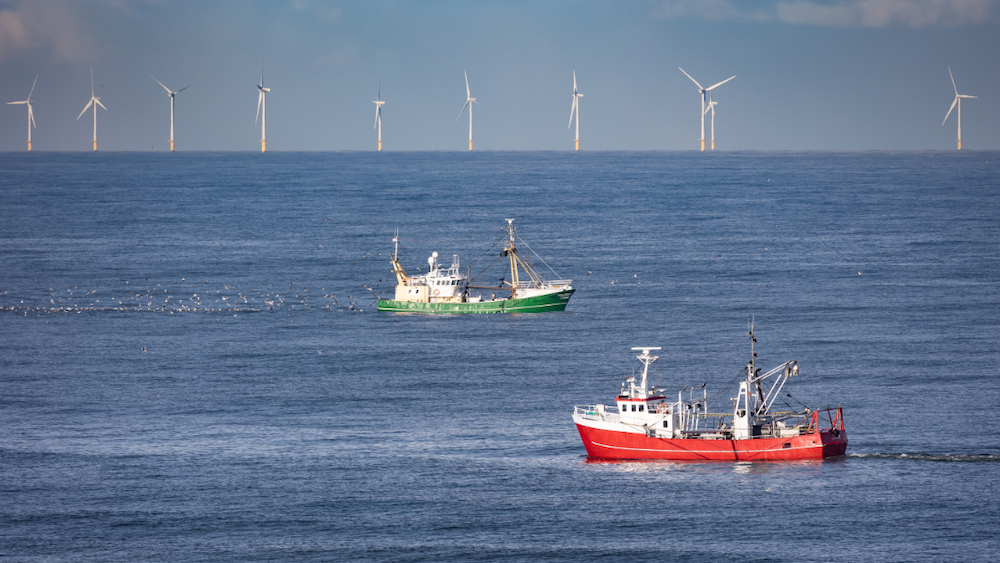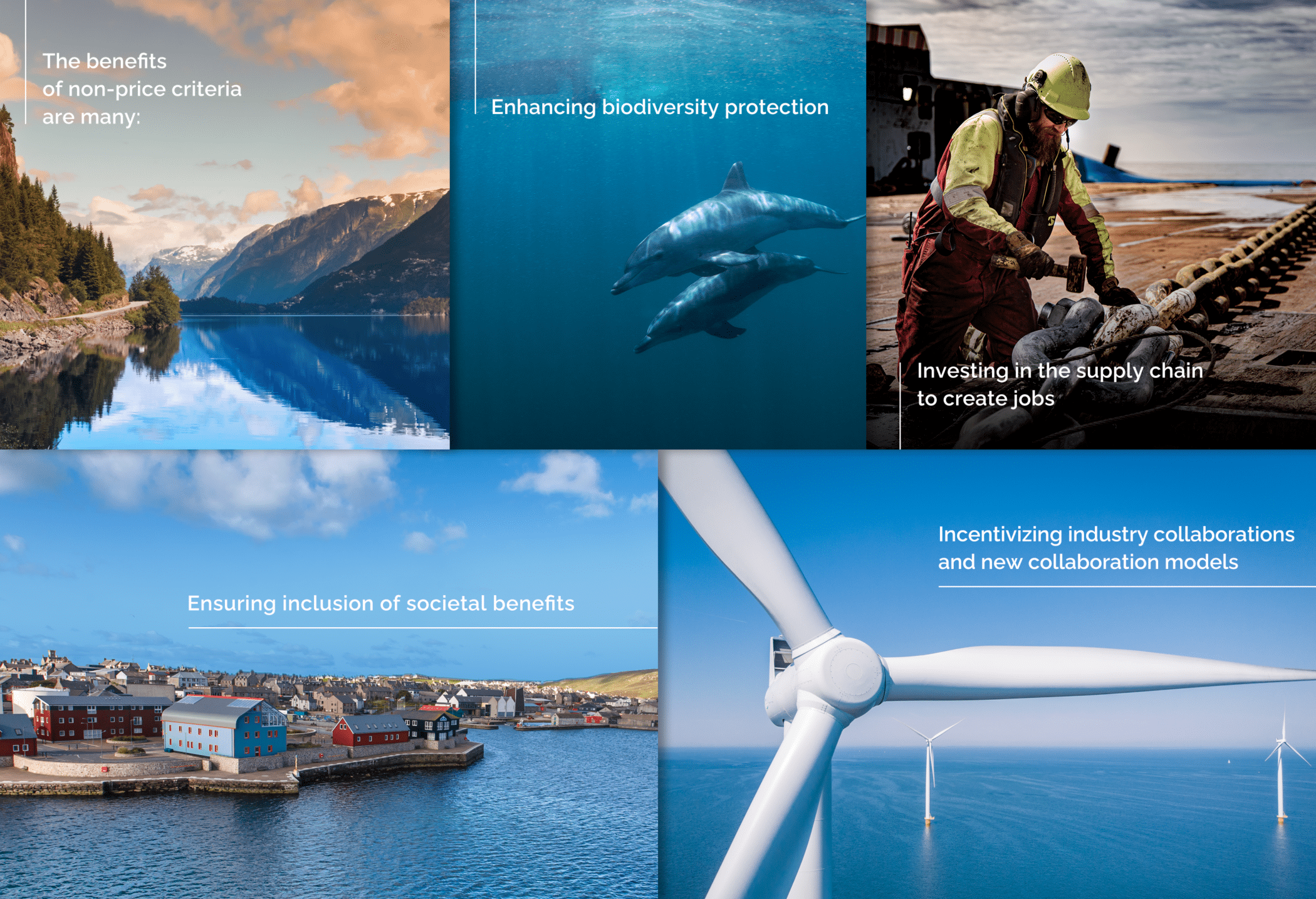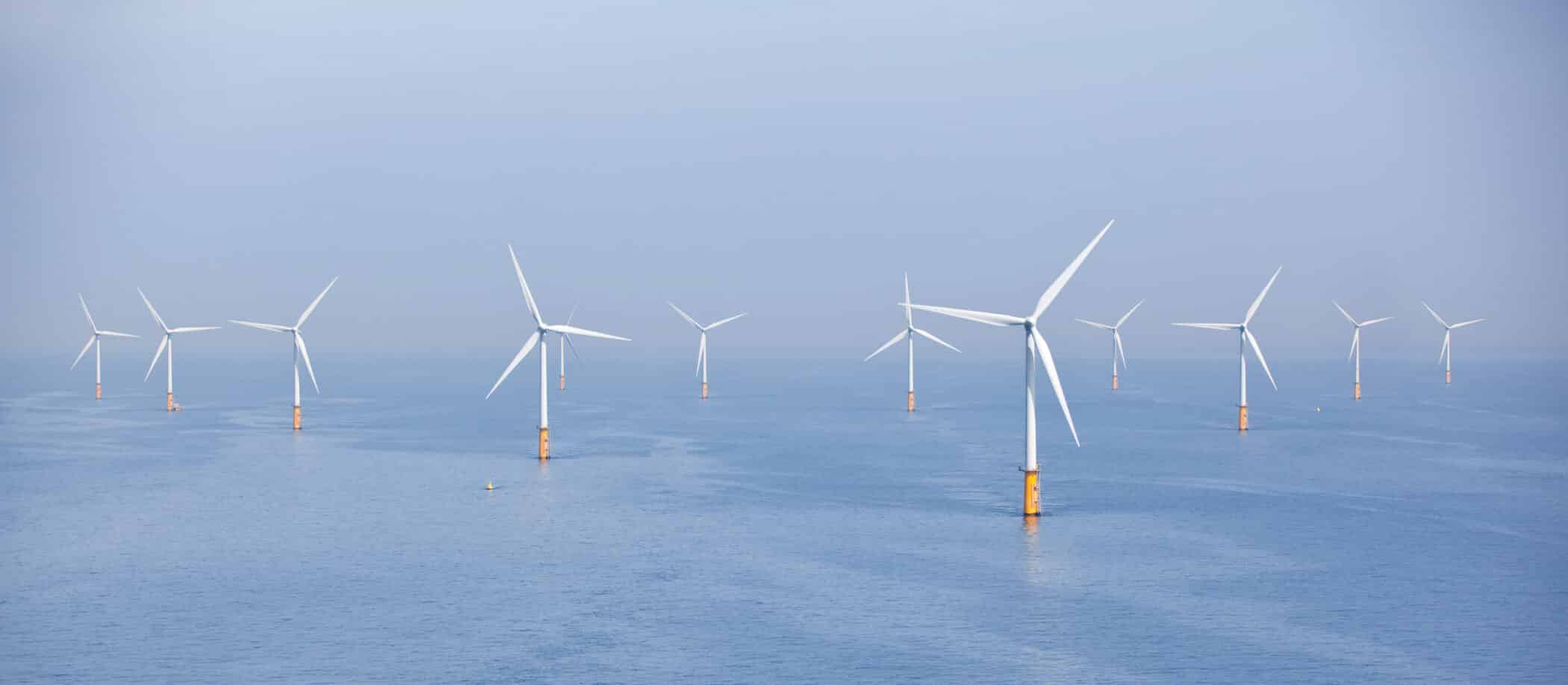Unlocking the gridlock: Non-price criteria can provide a sustainable pathway for industry and planet alike
Published: September 2023
By Ingrid Lomelde
Group Head of Sustainability

Offshore wind is a central part of the climate solution. There are no pathways to reaching our climate goal of limiting global warming to 1.5°C above pre-industrial levels without a massive expansion of offshore wind power. According to the International Energy Agency, we will need to build 80GW of offshore wind every year going forward to reach this target. That is a massive endeavor made more challenging yet because of the need to – at the same time – usher forward a sustainable coexistence between ocean industries and their surrounding environment while developing the economic sustainability of the industry. Which is what we might call the offshore wind gridlock.
As the race for space is intensifying across our oceans, we need to think differently around how we manage and coordinate future offshore industrial developments. Sustainability must frame how we plan and execute projects. Offshore wind can drive ahead a development where cutting emissions, protecting biodiversity, providing local benefits, and scaling up new technologies merge into one common agenda. But to achieve this, sustainability-linked non-price criteria will be the key, both to minimizing environmental impact and breaking the offshore wind gridlock.
Against the backdrop of the world’s deepening climate emergency, construction of the next generation of offshore wind projects will have to be carried out with every effort made to stop global loss of biodiversity. The abundance of species on the planet has declined by 75% in the past 40 years and 90% of the excess heat in the climate system has been absorbed by the ocean.
Ocean ecosystems are under pressure and experience rapid changes. Biodiversity protection is becoming increasingly important across all industries, supported by important political developments like the Kunming-Montreal Global Biodiversity Framework negotiated in Montreal in December 2022, and the Biodiversity Beyond National Jurisdiction Treaty which was recently reached after decades of negotiations.

Mainstream is the only offshore wind developer contributing to the three-year Norwegian Marco research project, which is focused on resolving marine user conflicts and protecting ocean ecosystems
Scaling with biodiversity net gain
This past year has provided plenty of challenges for renewables developers. With a fast-changing geopolitical climate and soaring costs in the supply chain, the industry has seen projects shelved or slower to develop than originally planned. Intense price-based auctions have been used to achieve the goal of rapidly scaling up the technology to drive down costs in many markets – but that has resulted in an untenable lack of profitability in parts of the supply chain that risks hindering a sustainable energy transition. This has led several countries to move away from ‘pure’ price-based auctions and include criteria that measure the quality of the project, not just its price, when awarding new licenses.
“Non-price criteria level the playing field for companies to invest in sustainable project development and alleviate the pressure of competing on price alone.”
Criteria shape and content varies county to country, but common to all are various ways of measuring contributions to reduced emissions across the offshore wind value chain, ways of supporting local jobs and skills development, and ways of moving on from simply managing negative impacts on biodiversity to measuring positive contributions to ecosystem health. Most countries use the full 30% weighting on non-price criteria that the EU state aid rules allow, and several countries have increased this to 50% for auctions where there is no state aid involved. These are positive signs.

Building markets and thriving societies
The countries leading this development are actively using ways of enhancing benefits to society to also increase the attractiveness of their offshore wind markets. Non-price criteria level the playing field for companies to invest in sustainable project development and alleviate the pressure of competing on price alone. This provides incentives for industry collaboration in new knowledge and technology development, which again can support a wider transition to green solutions across sectors and for local communities.
The externalities that society has borne the brunt of because they were only to a limited degree factored into industrial developments, biodiversity impacts and emissions being a case in point, are now turned into winning criteria. These criteria guide behavior like increased investments in innovation and research and adds pace and force to an energy transition that will secure long-term sustainability for both people and planet. Countries that are leading the way are:
Denmark:
New sustainability criteria have been introduced into the auction model, including a required third party verified life cycle analysis to reduce emissions and that developers must monitor and manage their effects on nature and the environment.
France:
The offshore wind pact between government and industry includes a commitment to implement exemplary projects in terms of integration into the environment. The recent Normandy auction was conducted under these rules where 25 of 95 points were connected to environmental monitoring, supporting a biodiversity fund, recycling plans, and community investments.
Germany:
The newest 1.8GW tender included non-price criteria for both environmental and labor force development commitments, with projects weighted against their contribution to the decarbonization of offshore wind, volume of generation, foundation technologies used and associated noise pollution and sealing of the seabed, and their contributions to securing skilled workers.
Netherlands:
Projects are particularly measured for their contribution to a circular economy and contributions to the ecology of the North Sea. Some tenders give up to 50% weighting of sustainability linked non-price criteria.
Norway:
This year’s competition for both bottom-fixed and floating licenses includes an industry sought-after prequalification where projects are measured on how they cut emissions, manage biodiversity and secure coexistence with local communities and other ocean industries.
Leading from the front
The old paradigm of measuring every value exclusively in its price has led us to the brink of planetary disaster and has proven to be very costly for society indeed. According to global insurance company Swiss Re, climate change impacts could result in as much as $23trn (€21.5trn) in reduced yearly economic output – the equivalent to 11-14% cut to global economic output by 2050. The cost of solving climate change, in contrast, is estimated to be 2% of annual global gross domestic product.
By turning our care for the planet and its ecosystems into a measurable pathway for project success, countries can make good on their climate targets and biodiversity commitments, while the offshore wind industry can showcase our broader value to society as a catalyst for a world powered by renewable energy.

![Offshore wind turbines at sea - United Kingdom Offshore Wind UK Round 5 CfD - Mainstream Renewable Power [Desktop/mobile] UK Round 5](https://www.mainstreamrp.com/wp-content/uploads/2023/09/mainstream-renewable-power-news-and-media-insights-united-kingdom-gold-rush-offshore-wind-farm-640x360.jpg)